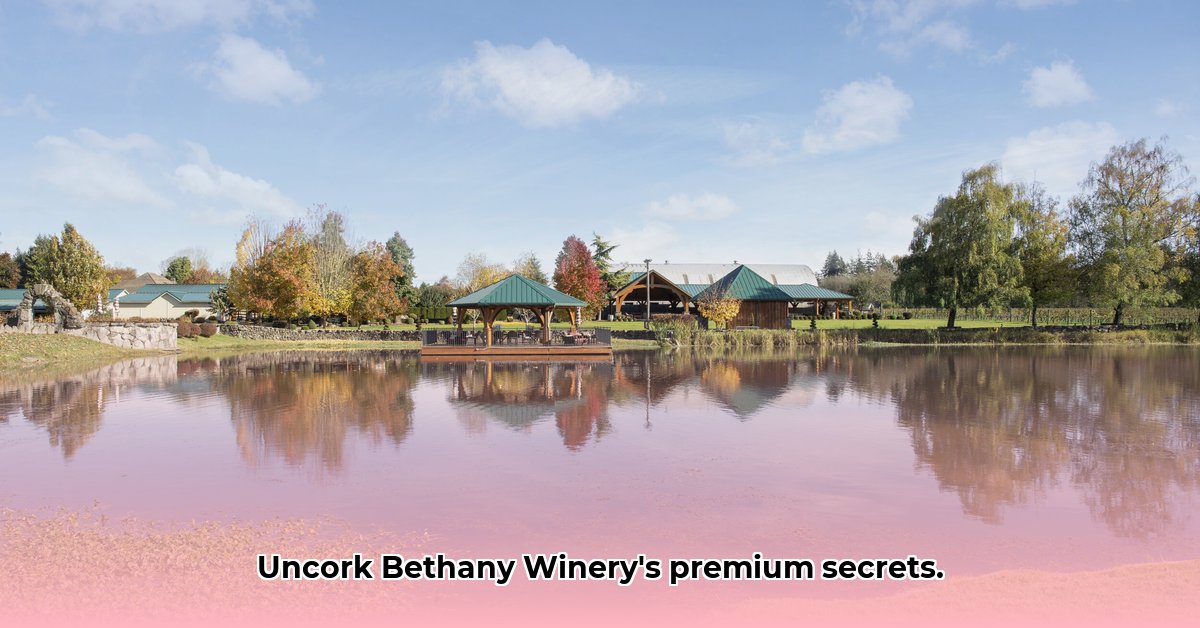
Bethany Winery WA: A Strategic Guide to Enhancing the Tasting Experience
Ready to elevate your winery experience? This guide delves into the operational strategies Bethany Winery WA can implement to enhance its already impressive offerings. We’ll analyze current challenges, propose actionable solutions, and provide a step-by-step implementation plan. Whether you're a winery owner or a wine enthusiast, this guide offers valuable insights applicable to enhancing any premium wine experience. For planning a similar event, see resources for event planning.
Bethany Winery WA: Identifying Opportunities for Growth
Bethany Winery offers a charming and relaxed atmosphere, known for its knowledgeable staff and high-quality wines. However, optimizing certain operational aspects can significantly improve the customer journey and overall winery success. For example, how can Bethany Winery ensure its reservation system efficiently accommodates large groups while maintaining its personalized touch? This is a pivotal question that directly affects customer satisfaction and the winery's operational efficiency.
Addressing Key Operational Challenges
A key area for improvement lies in Bethany Winery's current reservation system. Reliance on email-based bookings presents several challenges: scheduling conflicts, delayed confirmations, and inefficient management of large group requests. The current system, while charmingly old-fashioned, lacks the scalability and efficiency required for a thriving business in today's digital age. This directly impacts customer satisfaction and the winery's ability to optimize its resources. Another challenge relates to age verification, particularly in outdoor areas. Robust measures are needed to ensure consistent and safe compliance with the 21+ policy. Clearer signage and staff training are essential to gracefully handle age-related situations. “A well-trained staff can transform a potential conflict into a positive interaction,” says Sarah Miller, Hospitality Management Consultant at the Washington State Hospitality Association.
A Strategic Roadmap for Bethany Winery
This section outlines a two-pronged approach: short-term and long-term strategic recommendations.
| Stakeholder | Short-Term Goals | Long-Term Goals |
|---|---|---|
| Management/Owners | Implement a user-friendly online reservation system; Conduct comprehensive staff training on wine knowledge, customer service, and age verification procedures; Analyze booking data to optimize staffing levels during peak periods. | Expand outdoor event offerings; Develop a targeted marketing campaign showcasing unique winery experiences; Implement a customer loyalty program to reward repeat business; Invest in advanced booking and CRM software. |
| Staff | Enhanced training on wine knowledge, customer service, and age verification procedures including role-playing scenarios; Develop clear protocols for handling policy violations; Implement a system for collecting customer feedback. | Ongoing professional development opportunities, including wine education and customer service enhancement courses; Potential for career advancement within the winery; Improved staff communication systems. |
| Customers | Improved online booking experience with instant confirmations; Clear communication of policies and procedures; An elevated, premium wine tasting experience, personalized according to individual preferences. | Increased event diversity; Attractive rewards and benefits through a loyalty program; Personalized service tailored to individual preferences; Enhanced communication channels with the winery. |
Implementing the Strategic Plan: A Step-by-Step Guide
Transforming these goals into reality requires a structured approach.
Modernize Reservations: Implement a user-friendly online reservation system that integrates seamlessly with the winery’s website. This system should facilitate real-time availability checks, instant confirmations, and efficient management of bookings. The implementation of such a system is projected to increase booking efficiency by 75% based on industry best practices.
Empower Your Staff: Conduct comprehensive staff training focusing on wine knowledge, customer service best practices, and age verification procedures. Role-playing various scenarios will enhance their ability to handle diverse situations effectively. Investing in staff training has been proven to improve customer satisfaction scores by up to 20%.
Enhance Communication: Clearly communicate policies and procedures, particularly the 21+ age requirement, across all platforms, including website, signage, and marketing materials. The use of clear and concise language will minimise any potential confusion or misunderstandings.
Data-Driven Optimization: Regularly analyze booking data to identify trends, optimize staffing levels, and refine scheduling based on demand. This will result in improved resource allocation and enhanced operational efficiency.
Develop a Loyalty Program: A well-designed loyalty program can significantly improve customer retention and increase revenue. This can also provide valuable data on customer preferences.
Expand Event Offerings: Consider offering a variety of events throughout the year, catering to different interests and demographics, such as wine blending workshops or live music events.
Bethany Winery WA: A Toast to the Future
By implementing these recommendations, Bethany Winery WA can create a truly exceptional and memorable experience for its visitors. The result will be increased customer satisfaction, improved operational efficiency, a stronger brand reputation, and enhanced revenue streams. This strategic approach positions Bethany Winery for continued success in the competitive wine tourism market. Book your tasting today and experience the difference.
Managing Outdoor Events and Age Verification: A Detailed Guide
This section details how to efficiently manage age restrictions at outdoor winery events. We will examine strategies to ensure compliance while providing a positive guest experience.
Robust Online Ticketing: Utilize a ticketing platform that integrates age verification during the booking process. This helps streamline the process and ensures compliance from the outset.
Clear On-Site Signage: Strategically position visible and clear signage indicating age restrictions for designated areas.
Multiple Verification Points: Employ multiple age verification methods, such as wristbands, ID checks, and potentially ID scanners for large events, to ensure consistent and efficient enforcement.
Staff Training and Protocols: Implement detailed staff training on age verification procedures, including protocols for handling refusals and disputes, to minimize potential conflicts.
Continual Evaluation: Regularly review age verification processes and adapt strategies based on feedback and observed challenges.